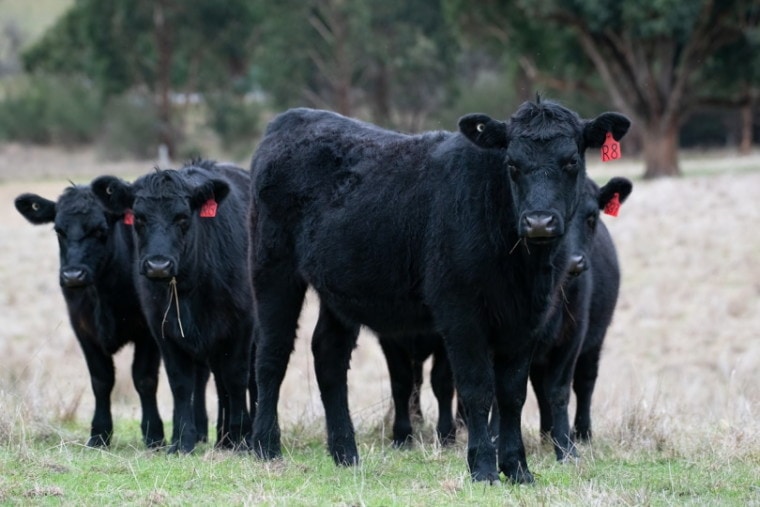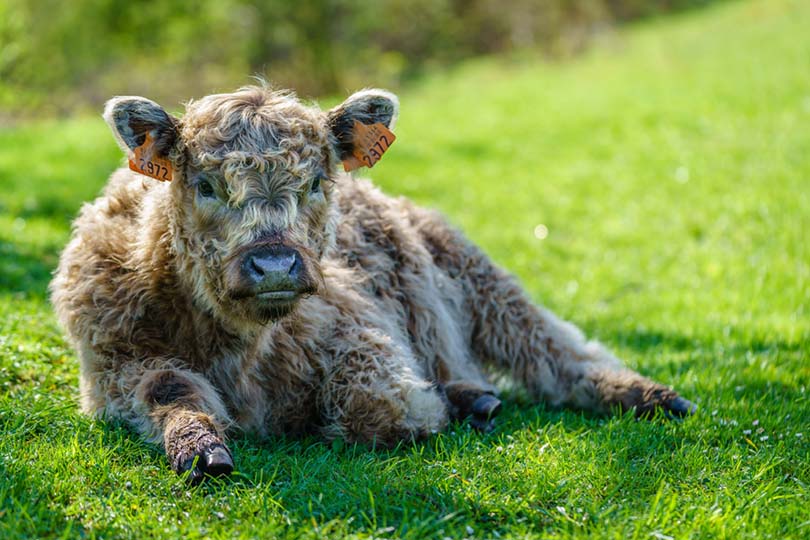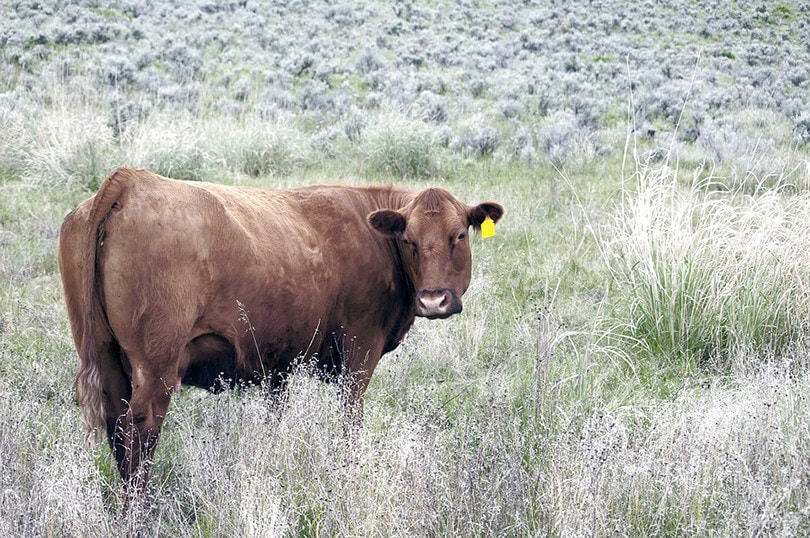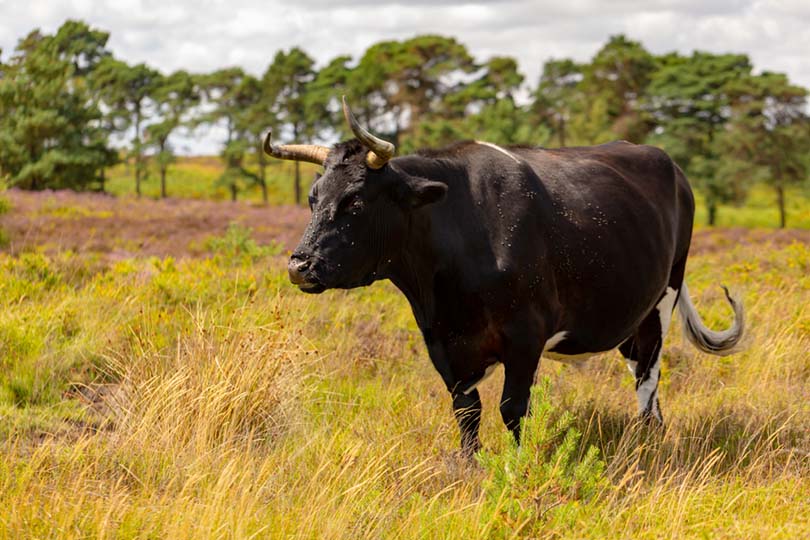The Breed of Beef Cattle That Originated in Scotland

There are cattle that are known for their milk production and there are cattle that are known for their meat. Scottish cattle, a commonage group of cattle that accept their origins in Scotland, are well-known and well-loved among the cattle manufacture and are kept primarily for the meat that they produce.
Scottish cattle typically produce lean meat, which is meat that has a low fat content. Did y'all know that when fat is stored in the human body, 1 of its main purposes is to insulate our bodies and keep us warm? The same thing is truthful for animals likewise.
The reason that Scottish cattle produce meat that is lower in fatty content is that most of them have thick, shaggy coats. They don't need equally much fat to keep them warm. Just, despite having the ability to produce lean mean in common, there are many differences that distinguish breeds of Scottish cattle from each other. We'll explain the differences among the 8 about popular Scottish Breeds in this article.

The eight Scottish Cattle Breeds:
one. Angus Cattle Breed

| Color: | Black |
| Weight: | 1,400+ pounds |
| Lifespan: | 15 – twenty years |
Angus cattle (also known as Aberdeen Angus to most of the world) are named for the regions in Scotland to which they are native: Aberdeenshire and Angus. Angus cattle are distinguishable from other Scottish cattle due to their black coat, which is less shaggy than other cattle every bit well. They too do not take horns.
Blackness is actually the ascendant color of cattle in this breed. Some other brood of Scottish cattle, Red Angus, is actually the recessive color. Some countries record the Black Angus and Red Angus every bit two separate breeds, while others register both colors every bit the same brood.
Black Angus cattle were introduced to the U.s. in 1873, where they are now the most pop breed used for beef. Other countries with large populations of Angus cattle include Australia, Canada, and New Zealand.
2. Ayrshire Cattle Breed

| Color: | Cerise-orange and white |
| Weight: | 990 – two,000 pounds |
| Lifespan: | x years |
Ayrshire cattle go their name because they originated from the Scottish county of Ayr. While most Scottish cattle are prized for the meat they produce, Ayrshires are unique because they are very prolific at producing milk also due to being very efficient grazers. In fact, i of the starting time uses of Ayrshire cattle in early Scotland was to produce cheese and butter.
This brood of Scottish cattle is easily recognized for its red and white hair, which tin can vary from shades of scarlet-orangish to mahogany to nearly dark-brown in color. They naturally have horns as well, only the horns are removed as calves due to not being practical to accept.
Ayrshires are popular among cattle and dairy farmers due to being easy to raise and being able to forage for themselves. All-in-all, this brood is very depression-maintenance from a farming standpoint.
3. Belted Galloway Cattle Brood

| Colour: | Black and white |
| Weight: | 990 – ii,300 pounds |
| Lifespan: | 17 – 20 years |
Belted Galloways, likewise chosen "Belties," have been effectually since 16th century Scotland in the commune formerly known as Galloway. This district was along the declension, so it was very rugged and dank. Equally a issue, this breed adjusted to be very hardy to cold and adverse conditions, as is evidenced past their shaggy coats. Their hair provides plenty of warmth and insulation for the cattle, which is why Belties produce such exceptionally lean and high-quality meat.
Although they are related to the Galloway breed and are both traditionally black in color, Belted Galloways can be distinguished past the white band of fur that wraps effectually their midsection. Although their natural fur is shaggy, it is sometimes kept brusque for commercial farming, particularly in warm areas. Today, Belties can too be constitute with red and dark-brown colorings, merely they all have that signature "belt" in club to aid identify them.
four. Galloway Cattle Breed

| Color: | Black |
| Weight: | one,000 – 1,500 pounds |
| Lifespan: | 17 – 20 years |
Simply like the Belted Galloway, Galloway cattle originated from the Galloway region in Scotland somewhere around the 15th or 16th century. Almost of the original Galloway cattle had horns, just there were also some that were polled, meaning that they didn't take horns. Supposedly, this breed was never crossed with other breeds, and then the lack of horns was likely due to a genetic mutation. Even so, breeders decided that they liked the polled look, and then they started breeding the cattle to be hornless. Today, nigh Galloway cattle do not accept horns.
Like the Belted Galloway, Galloway cattle are very hardy equally a breed. Even though they were originally from a colder climate, they are able to acclimate to warm climates as well. This brood is known for its ability to nativity calves easily. This, combined with the female's maternal instincts, allows Galloways to produce young for much longer than other cattle breeds. The main colour for these cattle is black, simply they can also be found in red, brown, and dun which is a tan color.
5. Highland Cattle Breed

| Color: | Scarlet, black, brown, white |
| Weight: | i,100 – ane,800 pounds |
| Lifespan: | 20+ years |
Scottish Highland cattle are named for the Highlands region of Scotland, which is very remote and known for its harsh conditions, specially during winter. Adapting to these conditions was primal to the survival of the Highland breed. This led to the evolution of qualities necessary for survival, including hardiness, longevity, maternal instincts, and being excellent foragers.
As a matter of fact, this is one of the longest living Scottish cattle breeds, having a lifespan of over xx years. Similar other Scottish cattle, Highlands are prized for the lean meat that they produce, due more often than not to their long, shaggy coat adult to keep them warm in the cold and wet terrain.
Highland cattle are traditionally cherry-brown in color but can besides be found in black and white. Another distinguishing characteristic is their curved horns, which when combined with their shaggy hair makes this breed hands identifiable.
This breed was at one time very rare and even considered endangered. But, they are growing in popularity, particularly in the Northern Us and Canada. As of 2019, they are no longer on the Livestock Conservancy's Conservation Priority List, meaning that there are now over 1,000 registered in the U.s. every year.
6. Luing Cattle Breed
| Colour: | Red |
| Weight: | 1,100 – ii,100 pounds |
| Lifespan: | xx years |
Compared to other Scottish cattle breeds, the Luing is one of the youngest. It was showtime developed in the late 1940s as a cross between Shorthorn and Highland cattle on the Scottish island of Luing. By crossing these two breeds, a distinct breed was created that was both hardy and easy to get meat from. They also got from Highland cattle the power to forage and withstand cold temperatures outside, in addition to being piece of cake to breed themselves.
The glaze of the Luing is a combination of the shaggy Highland coat and the shorter coat of the Shorthorn. Most of these cattle are blood-red or white, but you may sometimes meet them with reddish and white coloring likewise. They have a very thick hide, which is like shooting fish in a barrel to remove to collect meat, a quality that they got from the Shorthorn.
7. Cherry Angus Cattle Brood

| Color: | Reddish |
| Weight: | ane,200-1,900 pounds |
| Lifespan: | 15 – 20 years |
The Red Angus breed originated from the Aberdeenshire and Angus region of Scotland, just like the blackness Angus did. Remember that the two breeds are actually considered to exist the same cow in many places. The major difference is that the colour of Cerise Angus cattle is the recessive colour trait. When convenance Angus cattle, it is estimated that one out of four calves will be ruby, while the other three are black.
Although they are considered to be medium-sized cows, Ruby Angus cattle are very beefy. They produce a lot of meat. This trait, combined with having a long lifespan and an easy-going temperament, has led the Scarlet Angus to be one of the most popular cattle breeds in the earth for producing beef. As a thing of fact, most of the Angus cattle on continents such as Africa, Australia, and South America are red instead of the more common blackness color.
viii. Shetland Cattle Breed

| Color: | Black, white |
| Weight: | 770 – 990 pounds |
| Lifespan: | 17 – eighteen years |
Shetland cattle are the smallest Scottish cattle brood. They are named considering of their origins on the Shetland Islands of Scotland. In the 1950s, there were only around twoscore purebred Shetland Cattle remaining. Although their numbers have increased today, they are yet a rare breed and are considered to exist at-risk.
The chief colour of Shetland cattle is black, with or without white. Colors such as red, grey, and chocolate-brown are possible just rare. They have pocket-sized horns that resemble Viking horns also.
Shetland cattle were originally bred to produce milk, and their milk is loftier in butterfat which is essentially the fatty part of milk. Only, Shetland cattle are very easy calvers, which means that they can be crossbred with bulls of all sizes to produce more than calves. Because of this, Shetlands are more often than not kept for breeding purposes or as suckler cows. Suckler cows feed their young themselves until they are old enough to be fattened for beefiness product.

What Is the Most Popular Scottish Beef?
Angus beef is the most popular Scottish beef in the entire world. The reason for its popularity is due to its marbling, which is substantially the amount of intramuscular fat in each cut of meat. The marbling of Angus beefiness is considered to be exceptional compared to other types of beefiness and is what gives Angus beefiness its juiciness, tenderness, and flavour.
Pure Angus beef is considered to be the all-time, but today Angus cattle are crossbred with other cattle. That means that when determining the quality of the beef, other factors demand to exist taken into consideration as well. Some of these factors include the lifestyle, nutrition, and age of the cattle as well every bit how the meat was processed.


Last Thoughts
Scottish cattle are pop by and large due to the lean meat that they produce, although some do produce milk besides. The reason for producing lean meat goes back to the cold climate in Scotland and the cattle'south ability to adapt to it by developing shaggy fur and full general hardiness. Whether you're looking into purchasing cattle for your subcontract or are a foodie with an interest in beefiness, we hope this article provided you lot with plenty of useful information to take with you.
Featured Paradigm Credit: pen_ash, Pixabay
Source: https://petkeen.com/scottish-cattle-breeds/
0 Response to "The Breed of Beef Cattle That Originated in Scotland"
Post a Comment